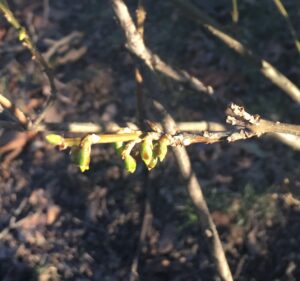Main Content
Weed Control Update
It feels like winter is hanging on and it looks a bit more Siberia-like than it did at this time in 2017. I’m writing this while watching the telecast of the Arnold Palmer Invitational in sunny Florida (where the greens are rolling PURE) and another snowstorm is taking aim at the Northeast. Interestingly, when comparing the 2018 GDD accumulation to 2017, things aren’t too different. We have accumulated about 300 GDD (using a base of 32 F) to date compared to 340 GDD at this time in 2017 in central New Jersey. However, things do look different when using a GDD model with a base of 50 F. We have accumulated 26 GDD50 to date in 2018 compared to 58 GDD50 at this time in 2017. Soil temperatures (3 inch depth) hit 50 F for a couple days in February, but have been hovering between 35 and 40 F ever since. So what does that mean for weed control?
Annual Bluegrass Seedhead Suppression
Using the based 32F GDD model (which in my opinion is more appropriate for this region the the base 50F model) we are within the optimum application window for spring ethephon (Proxy) applications. If you haven’t already applied and are making spring-only applications, later this week or early next week would be a good time to apply if the snow melts. If you made an application in the December, January, or February, you have a lot more flexibility on the spring application timing and can probably wait until near the end of the optimum GDD window. For more information on GDDs and annual bluegrass seedhead suppression see this previous blog post
http://turfblog.rutgers.edu/?p=989
Our 2016-2017 seedhead suppression research (in collaboration with Dr. Zane Raudenbush at OSU-ATI) demonstrated that Proxy applied in December and twice in the spring provided better annual bluegrass seedhead suppression than two spring applications. Interestingly, a single Proxy application in December with no spring applications was very effective in both New Jersey and Ohio. We are currently repeating this research. I’ve been asked if Proxy applications in January or February instead of December would be effective. Dr. Shawn Askew’s research in the Mid-Atlantic region demonstrates that January or February applications are extremely effective, but this application timing has not been evaluated in the Northeast or Midwest where annual bluegrass tends to be more dormant in January and February than in the Mid-Atlantic. This concept is something we plan to explore in more detail next winter.
Crabgrass Control
The forsythia bush is an effective phenological indicator of crabgrass germination. When forsythia reaches full bloom, it is an indicator that the opportunity to apply crabgrass pre-emergent materials is about to pass. If you are using dithiopyr (Dimension) you can wait until shortly after crabgrass emergence to apply.
You may remember last year that in Central and Southern New Jersey, forsythia bloom began in early March and these early blooms were killed by a snowstorm. Forsythia full bloom occurred in early April 2017 (and crabgrass germinated in mid April), which was a bit earlier than normal. This year with more seasonal temperatures, buds are visible but we are still several warm days away from forsythia full bloom. We are also well below the 3-day 55 F soil temperature threshold that is another good indicator of crabgrass germination. The 5-day rolling soil temperature average has been below 38 F for the last week.

The Bottom Line
With this seemingly long winter you may be stir crazy or trying to find something to do besides clean up tree debris. In regards to weed management, be patient and make applications when the plants are ready. The soil is slowly warming and the sun intensity is increasing as we trudge towards spring. In the meantime, make sure your sprayer is calibrated and get the dust off your golf clubs. Spring is coming – allegedly.